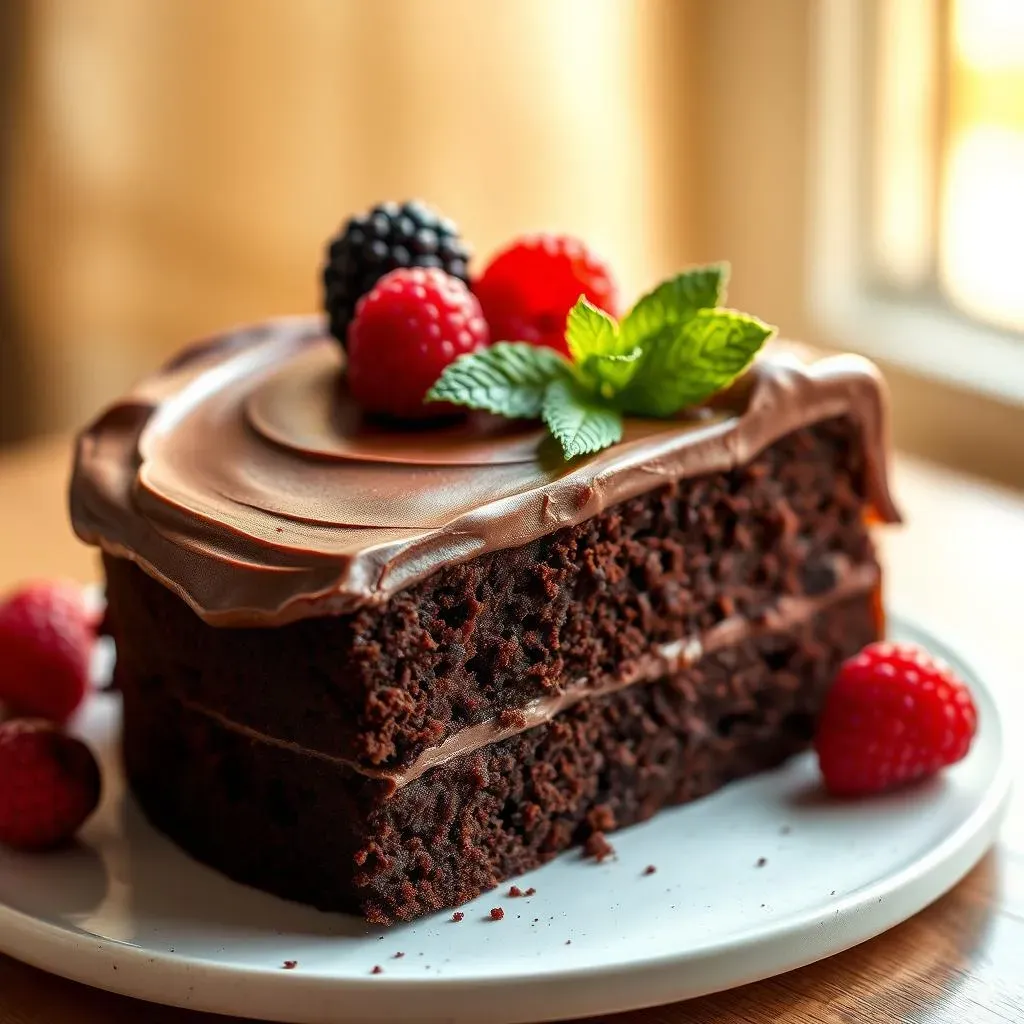Table of Contents
So, you're ready to bake the ultimate fudge chocolate cake, but you have a few questions? You've come to the right place! This comprehensive guide tackles all your burning "fudge chocolate cake FAQs," ensuring your baking journey is smooth and delicious. We'll explore everything from ingredient substitutions and baking techniques to creative frosting ideas and storage tips. Whether you're a seasoned baker looking to refine your skills or a beginner taking your first steps into the world of decadent desserts, this article is your secret weapon. Prepare to discover the answers to common challenges and unlock the secrets to a truly unforgettable fudge chocolate cake. Get ready to impress your friends and family with a cake so rich and moist, it'll be the talk of the town! We'll cover essential ingredients and how to adapt the recipe to suit your needs and pantry staples. Then, we'll dive into the baking process, providing troubleshooting tips to avoid common pitfalls and ensure a perfectly baked cake every time. Next, we’ll explore a world of frosting and decoration options, transforming your cake from delicious to downright dazzling. Finally, we'll share expert advice on storing and serving your masterpiece, guaranteeing it remains moist and flavorful for days. Let's get baking!
Ingredients and Substitutions: Mastering Your Fudge Chocolate Cake
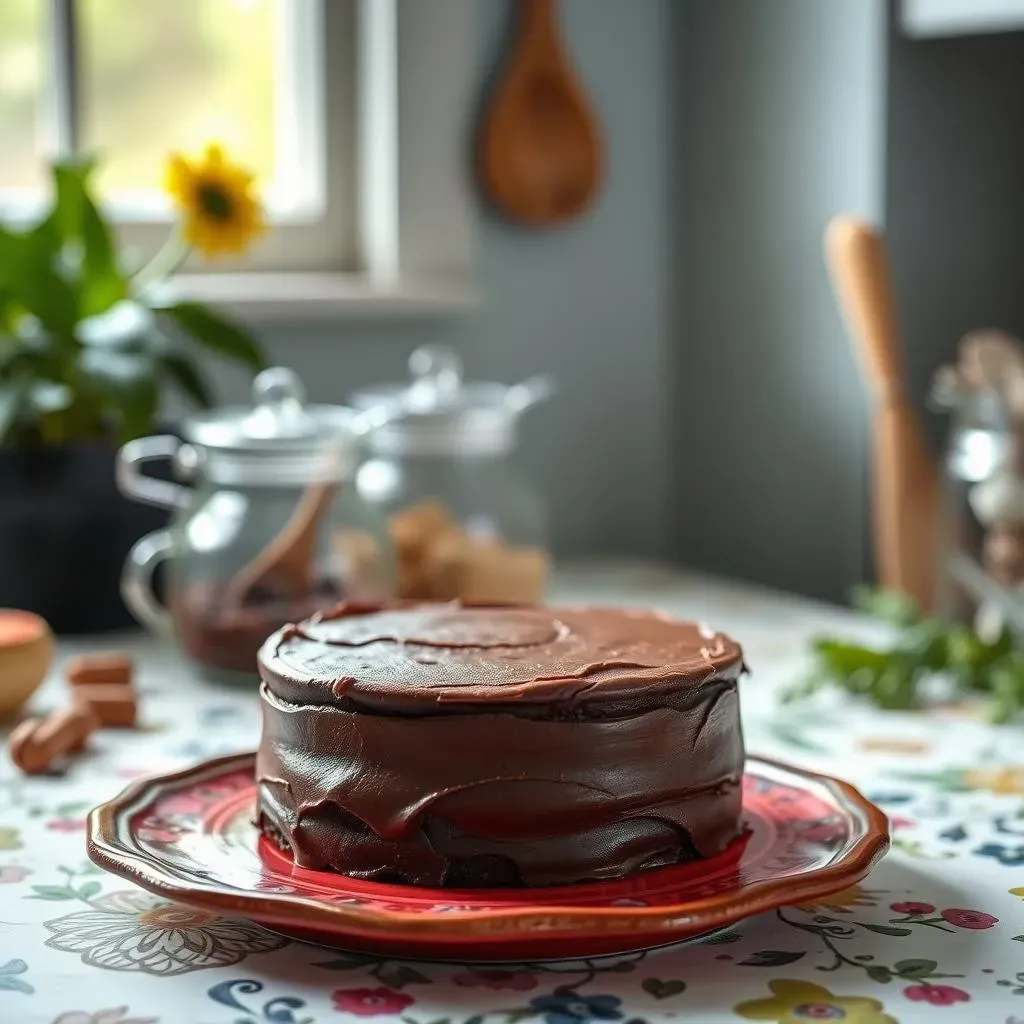
Ingredients and Substitutions: Mastering Your Fudge Chocolate Cake
The Core Ingredients: Your Fudge Chocolate Cake Foundation
Let's start with the MVPs of any good fudge chocolate cake: cocoa powder, sugar, flour, eggs, butter, and milk. The cocoa powder is key – Dutch-processed cocoa gives a richer, deeper chocolate flavor than natural cocoa. For a truly decadent experience, consider using a high-quality dark cocoa powder. A good quality flour is important too. Don’t skimp here! Using cake flour, will give you a lighter, more tender crumb, but all-purpose works fine too. Remember, you can find even more recipes on our site, like this fudgey chocolate cake recipe which uses a similar core set of ingredients.
Sugar is your friend in this recipe. It’s not just sweetness; it adds moisture and helps create that signature fudgy texture. Don't be tempted to reduce the sugar unless you have a good reason – it's a crucial part of the recipe's success. And finally, don’t forget the eggs and milk! Eggs bind everything together, providing structure, and the milk adds moisture. You can experiment with different types of milk; whole milk results in a richer, denser cake, while skim milk produces a slightly lighter result. Want to learn more about achieving that perfect texture? Check out our tips on making a moist fudge chocolate cake.
Ingredient | Substitution | Effect |
|---|---|---|
Butter | Vegetable oil | Slightly moister, less rich flavor |
Buttermilk | Milk + lemon juice | Similar tangy flavor |
Flour Power: All-Purpose vs. Cake Flour
Now, let’s talk flour. All-purpose flour is a reliable choice for most recipes, including fudge chocolate cakes. It delivers a good crumb structure. But if you want an exceptionally tender and moist cake, cake flour is the way to go. Cake flour has a lower protein content than all-purpose flour, resulting in a more delicate crumb. The lower protein content will produce a cake that is lighter and fluffier. If you only have all-purpose flour, don't worry! You can make a surprisingly good substitution. Simply whisk 2 tablespoons of cornstarch into 1 cup of all-purpose flour – it mimics the lower protein content of cake flour. This little trick can make a big difference in the final texture.
Thinking about experimenting with different flours? You can try substituting a portion of the all-purpose flour with almond flour or oat flour for a unique twist. However, keep in mind that these substitutions can alter the texture and moisture level of the cake. For example, substituting with almond flour might result in a denser, nuttier cake, whilst oat flour might give your cake a slightly chewier texture. These substitutions are certainly something to explore for your next baking adventure. For even more ideas, explore our selection of fudge chocolate cake variations!
- All-purpose flour: Standard, reliable choice.
- Cake flour: Lighter, more tender crumb.
- Almond flour: Denser, nuttier flavor.
- Oat flour: Chewier texture.
Sweet Success: Sugar and Beyond
Sugar isn't just about sweetness; it's crucial for the cake's texture and moisture. Granulated sugar is the standard, but you can experiment. Brown sugar adds a touch of molasses flavor and moisture. If you want a healthier option, try reducing the amount of granulated sugar slightly and adding a natural sweetener like honey or maple syrup. However, be aware that these substitutions might alter the flavor profile and overall texture of the cake. For example, honey might add a slightly floral note, while maple syrup will give it a hint of caramel.
Remember, these substitutions will change the taste and texture of the cake. It’s all about experimentation and finding what you enjoy! There are a whole host of different recipes to try out, and you can find out more about them in our comparison of different fudge chocolate cake recipes. Don't be afraid to try things out and see what works best for you. Baking is a journey, and sometimes the most unexpected substitutions lead to the most delightful discoveries! Happy baking!
Baking Techniques and Troubleshooting: Achieving Perfection
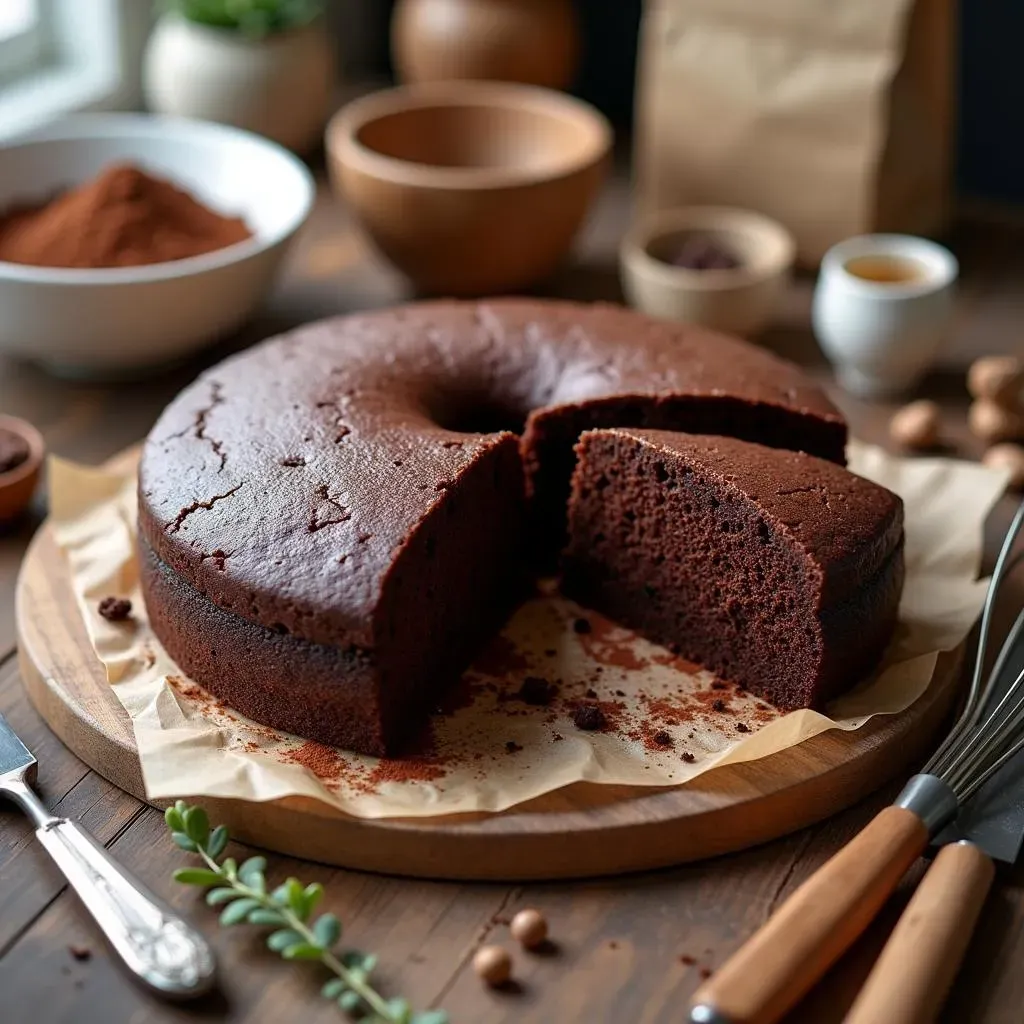
Baking Techniques and Troubleshooting: Achieving Perfection
The Perfect Bake: Oven Temperature and Timing
Oven temperature is crucial for a perfectly baked fudge chocolate cake. Make sure your oven is calibrated correctly; an inaccurate temperature can lead to a cake that's either underbaked or overbaked. Use an oven thermometer to double-check the temperature. Most recipes call for baking around 350°F (175°C), but always follow the specific instructions in your chosen recipe. Overbaking leads to a dry, crumbly cake, while underbaking leaves you with a gooey, uncooked center. Aim for a toothpick inserted into the center to come out with just a few moist crumbs attached—not completely clean, but not gooey either.
Baking time also varies depending on your oven and the size of your pan. A smaller pan will bake faster than a larger one. Start checking for doneness a few minutes before the minimum baking time suggested in your recipe. Use a toothpick or cake tester to check the center of the cake. Don't open the oven door too frequently while baking, as this can cause the cake to sink. Check out our troubleshooting guide for more tips!
Problem | Possible Cause | Solution |
|---|---|---|
Cake is dry | Overbaking, too much flour | Reduce baking time, use less flour |
Cake is gummy | Underbaking, too much liquid | Increase baking time, use less liquid |
Mixing Methods: The Key to a Fudgy Texture
The way you mix your batter significantly impacts your cake's texture. Overmixing develops the gluten in the flour, resulting in a tough cake. Mix until just combined; a few lumps are okay. Use a gentle hand, folding in the dry ingredients gradually. For a truly fudgy texture, don't overmix! This is especially crucial when incorporating dry ingredients like flour and cocoa powder. Overmixing will incorporate too much air, leading to a less dense, less fudgy result. You want a batter that's just mixed enough to combine all the ingredients evenly without incorporating too much air.
Undermixing, on the other hand, can lead to unevenly distributed ingredients and an unevenly baked cake. So, strike a balance – mix just until everything is incorporated. Using a stand mixer is helpful for achieving a consistent batter. But if you're using a hand mixer, be patient and mix thoroughly. If you're having trouble achieving the right consistency, check out our recipe for an easy fudge chocolate cake—it offers some great tips for avoiding common mixing mistakes.
- Mix until just combined.
- Avoid overmixing to prevent a tough cake.
- Use a gentle hand, folding ingredients.
Cooling and Storage: Preserving Your Cake's Freshness
Once your cake is baked, let it cool in the pan for about 10 minutes before inverting it onto a wire rack to cool completely. Cooling the cake in the pan allows it to set before handling. This prevents it from breaking apart when you try to remove it. Allowing it to cool completely prevents moisture from being trapped inside the cake, which can lead to a soggy bottom or even mold. A completely cooled cake is also easier to frost, resulting in a smoother, more professional-looking finish.
Once cooled, store your unfrosted cake in an airtight container at room temperature for up to three days. If you've frosted it, refrigerate it for up to a week. For longer storage, freeze your unfrosted cake in an airtight container or freezer-safe wrap for up to three months. Properly stored, your cake will retain its moistness and delicious flavor. To learn more about keeping your cake fresh, read our helpful tips on fudge chocolate cake storage.
Frosting and Decoration Ideas: Taking Your Cake to the Next Level
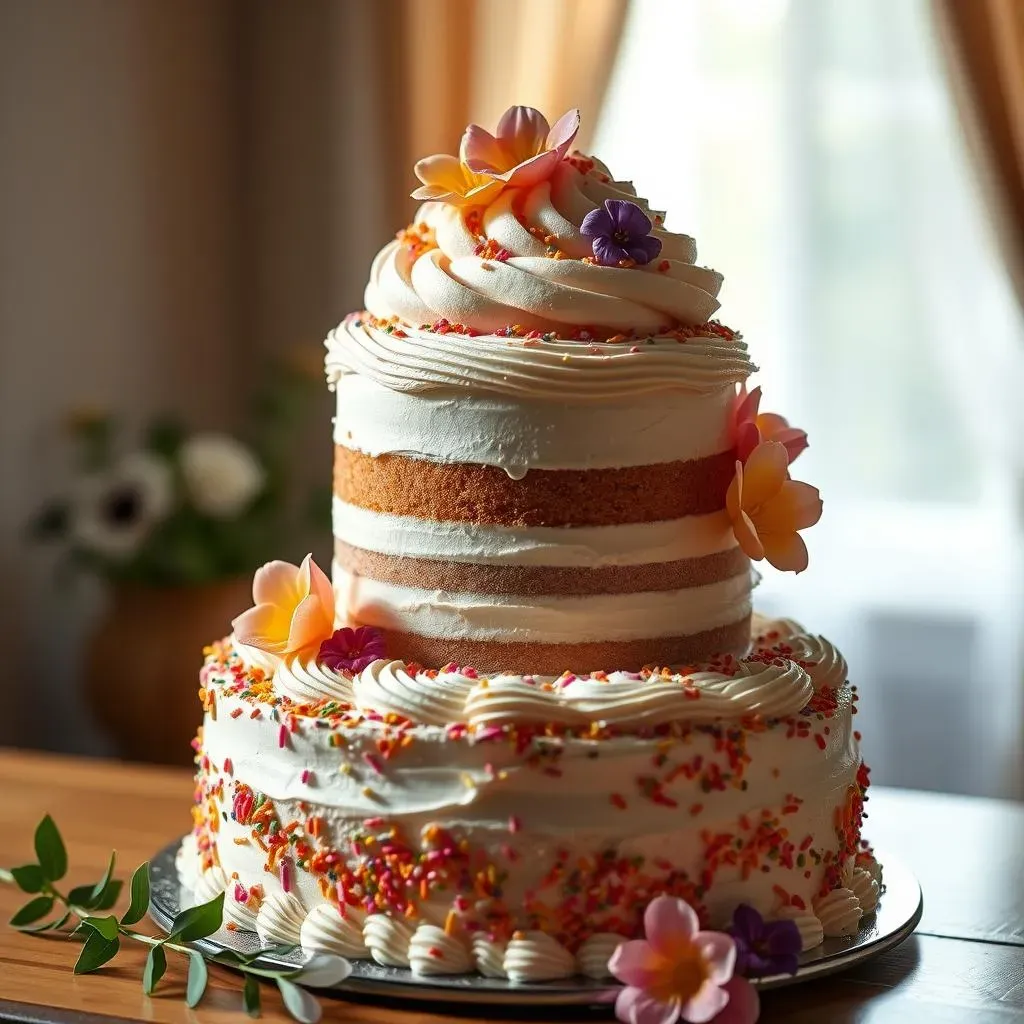
Frosting and Decoration Ideas: Taking Your Cake to the Next Level
Classic Chocolate Ganache: Rich and Decadent
Let's talk frosting! A classic chocolate ganache is the perfect complement to a fudge chocolate cake. It's rich, decadent, and relatively easy to make. Simply heat heavy cream until simmering, then pour it over chopped dark chocolate. Let it sit for a few minutes, then whisk until smooth and glossy. Let it cool slightly before frosting your cake. For an extra touch of elegance, you can drizzle some extra ganache over the top. Want to explore other frosting options? Check out our fudge chocolate cake with ganache recipe for more inspiration.
The beauty of ganache lies in its versatility. You can adjust the consistency by changing the ratio of cream to chocolate. A thicker ganache is ideal for frosting, while a thinner one is perfect for drizzling or dipping. Experiment with different types of chocolate – milk chocolate, dark chocolate, or even white chocolate – to create a unique flavor profile. Don't forget to let the ganache cool properly before using it to frost your cake, or it will be too runny.
Chocolate Type | Flavor Profile | Ganache Consistency |
|---|---|---|
Dark Chocolate | Intense, bitter-sweet | Rich and decadent |
Milk Chocolate | Creamy, milder | Smooth and creamy |
White Chocolate | Sweet, creamy | Light and airy |
Beyond the Basics: Creative Frosting and Decoration Ideas
While a classic chocolate ganache is always a winner, don't be afraid to get creative with your frosting and decorations! A creamy chocolate buttercream is another fantastic option. It's lighter and fluffier than ganache, offering a different textural experience. You can also experiment with different flavor combinations – adding a hint of coffee, espresso, or even peppermint for a unique twist. Consider using a piping bag to create decorative swirls or patterns. Or, keep it simple with a smooth, even coat of frosting.
For decorations, let your imagination run wild! Fresh berries, chocolate shavings, sprinkles, and even edible flowers can elevate your cake's presentation. You can create a rustic look by using a simple knife to spread the frosting or go for a more polished look with a spatula or piping bag. Remember, the most important thing is to have fun and enjoy the process! Looking for more inspiration? Our fudge chocolate cake with frosting page has some amazing ideas.
- Fresh berries
- Chocolate shavings
- Sprinkles
- Edible flowers
- Chocolate drizzle
Storage and Serving Suggestions: Keeping Your Cake Delicious
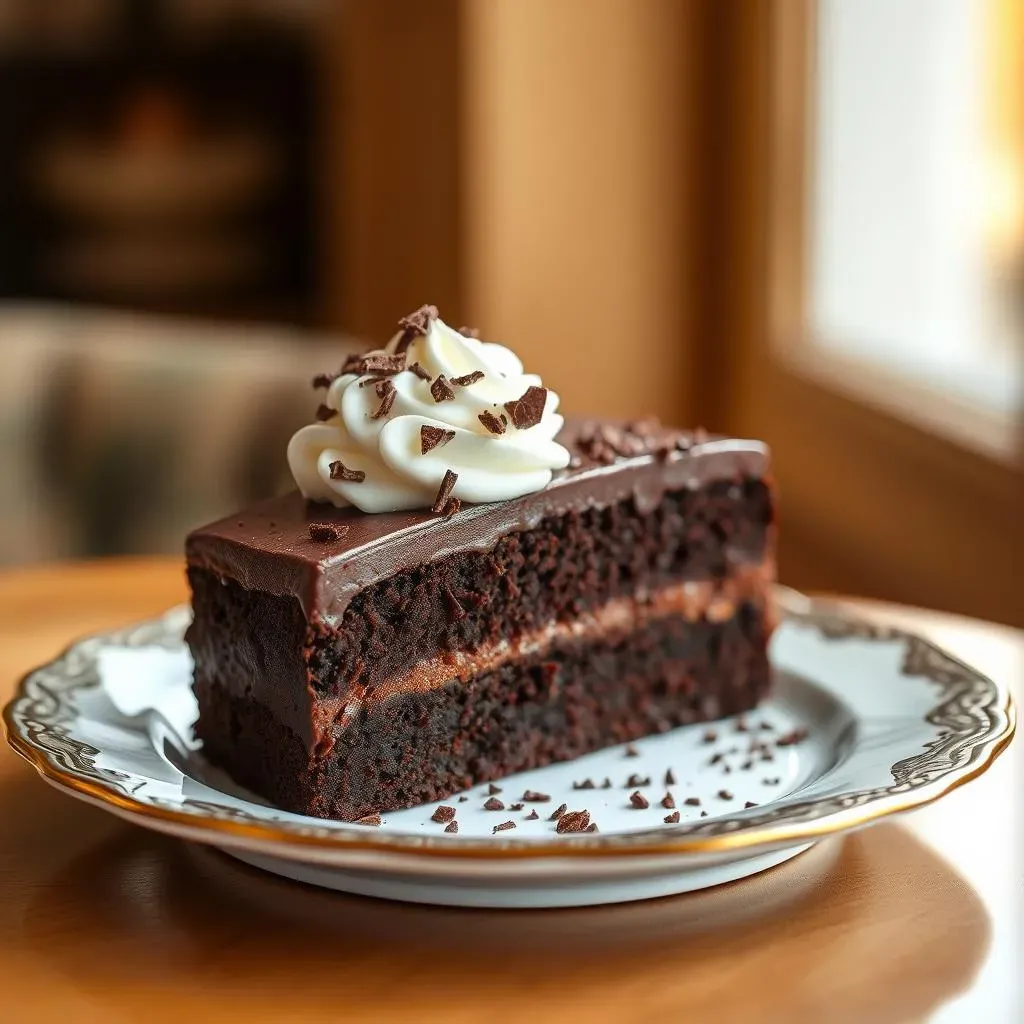
Storage and Serving Suggestions: Keeping Your Cake Delicious
Room Temperature Bliss: Short-Term Storage
For the freshest flavor, enjoy your fudge chocolate cake within three days of baking. Keep it at room temperature, covered loosely with plastic wrap or a cake dome to prevent it from drying out. This method works best for unfrosted cakes. A frosted cake will keep its shape and freshness a little better if refrigerated, but it may not taste as good at room temperature. If you're not planning to eat the entire cake right away, consider making individual servings or smaller cakes. That way, you won't have a huge portion sitting around, potentially going stale. Find more great recipes on our site, including this ultimate fudgey chocolate cake recipe.
Remember, the goal is to keep the cake moist and prevent it from absorbing any unwanted odors or flavors from other foods in your pantry or refrigerator. Avoid storing it near strong-smelling items like onions or garlic. A slightly cooler environment is often better than a warm one, so if you live in a hot climate, consider keeping your cake in a slightly cooler area of your kitchen, away from direct sunlight. For more tips and tricks for keeping your cake fresh for longer, explore our guide on storing your fudge chocolate cake.
- Store unfrosted cakes loosely covered at room temperature.
- Keep frosted cakes refrigerated for optimal freshness.
- Avoid strong-smelling foods near your cake.
Refrigeration and Freezing: Extending the Cake's Life
For longer storage, refrigeration is your friend. Frosted cakes will last up to a week in the refrigerator, tightly wrapped in plastic wrap or stored in an airtight container. Unfrosted cakes can also be refrigerated, but they might dry out slightly. If you're freezing your cake, make sure it's completely cooled and unfrosted. Wrap it tightly in plastic wrap, then foil, to prevent freezer burn. This extra step of protection will safeguard your cake's moisture and flavor. You can freeze your cake for up to three months, and it should still be delicious when thawed.
When thawing a frozen cake, transfer it from the freezer to the refrigerator overnight. Once thawed, let it sit at room temperature for a couple of hours to allow it to reach its optimal texture and temperature. This slow thawing process helps prevent the cake from becoming too soggy or crumbly. If you're in a rush, you can thaw the cake at room temperature, but keep a close eye on it to ensure it doesn't become too soft. For more tips on freezing your cakes, visit our page on storing your fudge chocolate cake.
Storage Method | Duration | Notes |
|---|---|---|
Room Temperature (Unfrosted) | 3 days | Loosely cover to prevent drying |
Refrigerator (Frosted) | 1 week | Wrap tightly in plastic wrap |
Freezer (Unfrosted) | 3 months | Wrap tightly in plastic wrap and foil |
Serving Suggestions: Making it a Feast
Serving your fudge chocolate cake is almost as important as baking it! Consider the occasion and your guests when deciding how to present it. For a casual gathering, simple slices on plates might be perfect. For a more formal event, you could elevate the presentation by using cake stands, decorative plates, and even individual dessert plates. Don't forget the silverware! A nice fork or spoon can add a touch of elegance to the experience. You might even want to add a small card with a personal message or recipe details.
Think about what complements your cake best. Whipped cream, ice cream, or even fresh fruit can add another layer of flavor and texture. A dusting of powdered sugar or chocolate shavings can also make it look more appealing. If you want to make it a real showstopper, consider adding some candles for a birthday or special occasion. For more ideas, explore our gallery of fudge chocolate cake reviews and see how others have served their masterpieces. Remember, the presentation of your cake is almost as important as the taste—it's the first thing your guests will notice!
